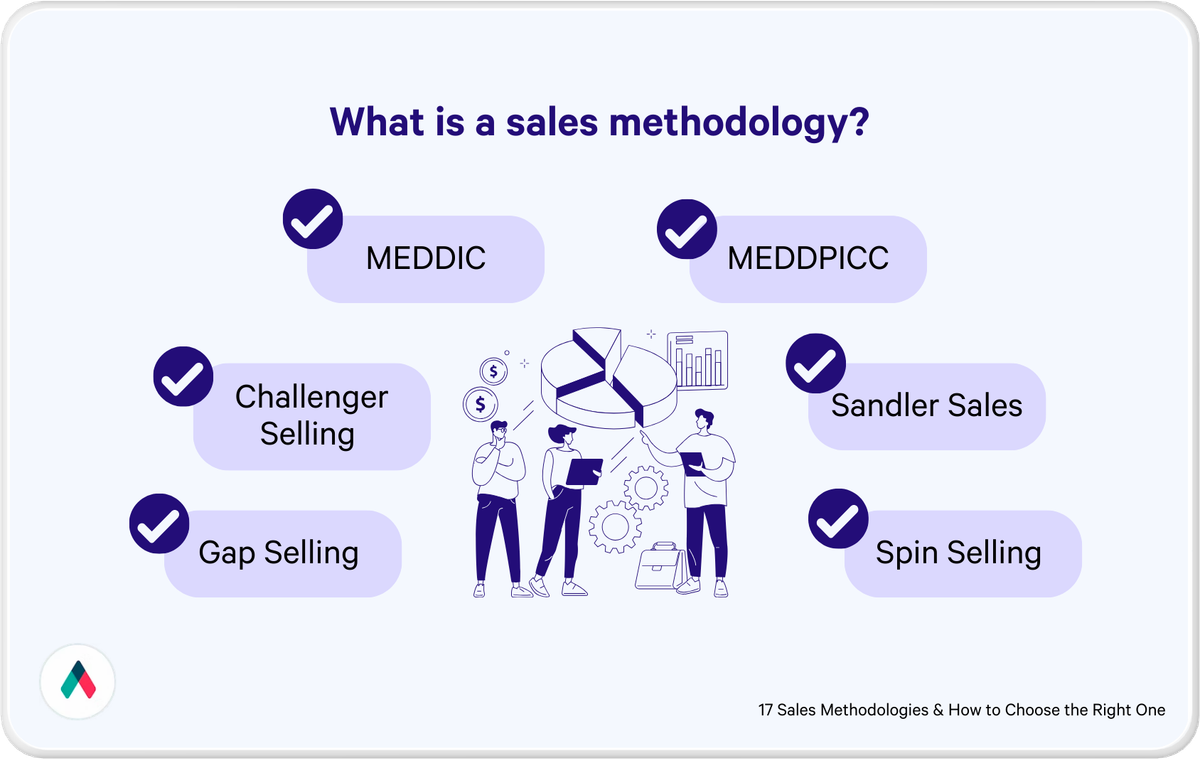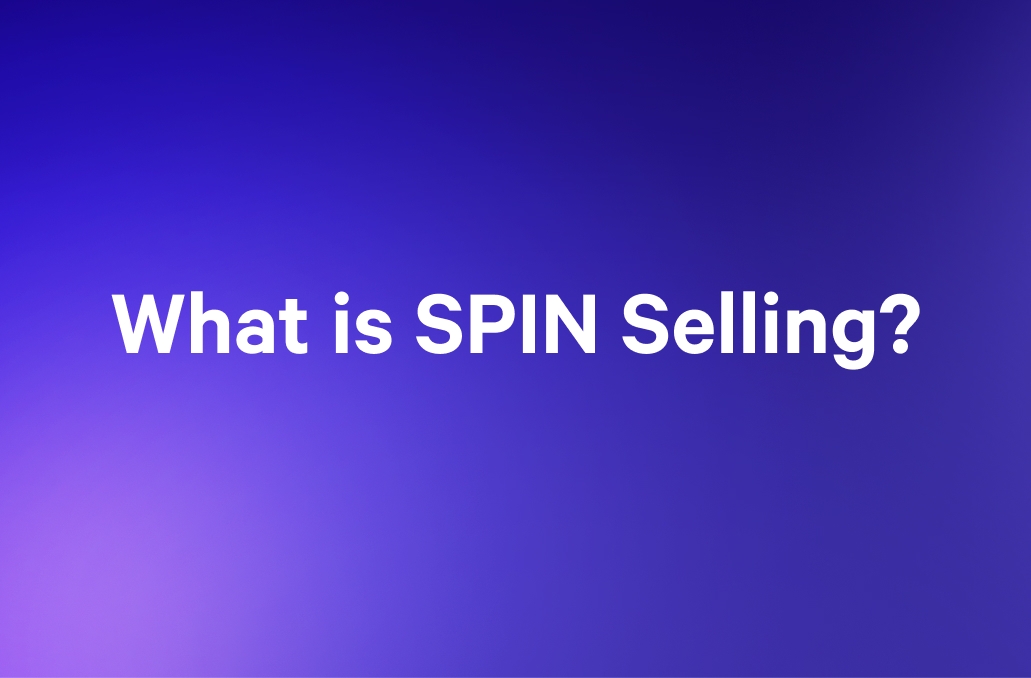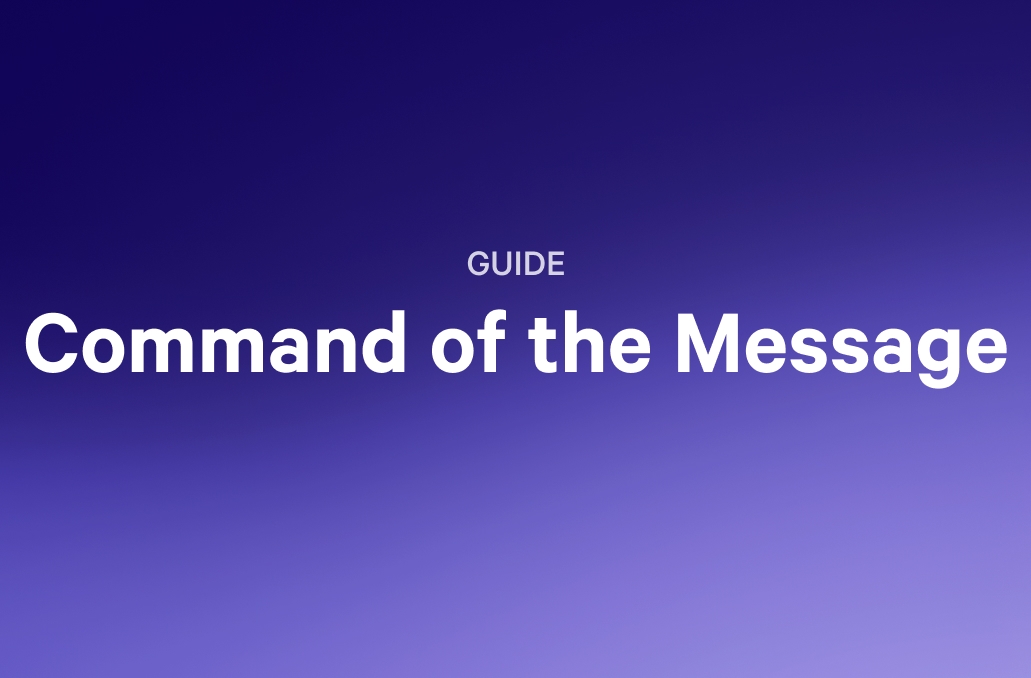Imagine that your prospective client is trying to solve a jigsaw puzzle instead of a business challenge. They’re sitting at a table, looking at scattered pieces, trying to find the right spot to place each one.
This is not at all unlike trying to untangle a business challenge. With personnel, tools, and technology all available for use, how does your prospect know they are leveraging everything they have in the most strategic way. They need the help of someone they trust, someone who is an expert in their field and a leader in the industry.
And this is where solution selling comes in...
It's not about merely presenting a product but rather assembling the pieces, forming a complete picture, and addressing the challenges prospects and clients face.
A whopping 87% of buyers now expect sales reps to act as trusted advisors instead of the old-school “pitch me the benefits, then overcome my objections.”
With most of the information they need only a mouse click away, and buyers reporting that self-service is their preference; they want help, not a dated sales call. They want their fears allayed. Reassurance that yours is the best solution for their particular problem. A demonstration that you understand their pain points and are the best person to address them, both now and in the future. It’s analytical, empathetic, and strategic all in one.
This article looks closer at solution selling, exploring the most effective strategies for transforming solutions into impactful sales narratives and relationship-builders.
What is Solution Selling?
The solution-selling approach flips the traditional sales script. Instead of starting with a product, it begins with the customer's pain points. It's a sales methodology that dives deep into the client's challenges, explores the nuances, and crafts a tailored, comprehensive solution that addresses those specific issues. Salespeople become problem-solvers, turning each customer interaction throughout the buying process into a dialogue that goes beyond the surface, revealing opportunities to provide solution based value at every turn.
In solution selling, the product or service isn’t the hero; it’s the bridge connecting customer challenges to viable, effective solutions. Think of this sales process as a consultative journey where understanding, empathy, and strategic resolution converge, forming a pathway that guides clients from their challenges to desired outcomes with your solution lighting the way.
Difference between Solution Selling vs Product Selling
The solution selling methodology is fundamentally a customer-centric one, putting the prospect where they want to be: front and center. It involves peeling back the layers of customer needs and crafting a custom solution to solve them. Conversations hinge on the client, their pains, and aspirations.
Product selling takes a different route. It places the product center stage, with conversations focused around features, benefits, and specs. The approach is more linear, directed towards convincing clients of the product’s standalone value. It speaks, often loudly, about what the product is, does, and offers.
Product selling is like broadcasting a radio signal to everyone; solution selling is sending a targeted message to a specific receiver.
Steps to Implement Solution Selling
Starting with solution selling means mixing empathy and a customer success strategy. It's about being understanding yet firm when selling. How can we combine our product knowledge with understanding our customers, while staying focused on solutions?
Here are seven key steps to use solution selling that fits well with your client's story.
1. Deep dive into client challenges
When a client presents a challenge, it’s often a surface symptom of deeper underlying issues. A client might express frustration over a b2b marketing software tool that's slow. The immediate problem seems straightforward - just fix the speed, right? However, to really implement the sales techniques behind solution selling, we need to understand the ‘why’ and ‘how’ behind what the prospect is calling slowness.
Is it an integration issue where their current systems clash with the new tool? Maybe it's a training gap where the team isn’t utilizing the software effectively. Or perhaps the problem stems from user interface design, which might be non-intuitive for the client's team.
It's crucial for the sales manager to dissect these layers by asking probing discovery questions, analyzing user data, and maybe even observing the team in action. A solution seller takes the time to understand the real pain - whether it’s a drop in productivity due to the slow software or morale taking a hit because team members are stressed out using it. It's all about identifying the actual issue and the impact it’s having on the business.
The deep dive, then, provides the framework to offer a solution that doesn’t just speed up the software but addresses the root cause of the problem, ensuring a more comprehensive and effective solution.
2. Craft tailored solutions
In the world of sales, crafting tailored solutions is akin to creating a custom suit for your client. Imagine a small business approaches you with concerns about dwindling customer engagement on their e-commerce platform. A generic approach might involve a trendy technology implementation, like chatbots, as a broad-spectrum solution to enhance customer interaction.
But that might not be the right fit. A detailed understanding of their customer demographics, purchase behaviors, and interaction history is pivotal. Perhaps their target audience values human connection over automated responses. Or maybe they need detailed product information a chatbot can’t properly provide.
So, instead of generalizing, you refine. You might suggest an integrated solution combining live chat support with an intuitive, user-friendly interface that highlights product details. Or a personalized customer loyalty program, strategically linking purchase histories with promotional offers, to better re-engage dormant customers.
Crafting a tailored solution requires both, a thorough understanding of the problem through the initial deep dive and the expertise to stitch together a response that fits impeccably with the client’s specific needs and context. Not just solving a problem but elevating the buyer experience with utmost precision and personalization.
3. Forge ‘relationship bridges’
In sales, maintaining a healthy relationship with clients isn’t merely a checkbox to tick; it’s the glue that holds together long-term partnerships.
In forging customer relationships, attentiveness is key. Proactive check-ins, timely assistance, and simply being present to celebrate their milestones can shift your role from a solution provider to a valued partner.
Say your client reaches a significant milestone in user engagement due to the streamlined data usage—acknowledge it, celebrate it with them, and use what you’ve learned about their achievement to support them in their next challenge. Here, a little effort goes a long way.
Understanding their future goals and hurdles creates a blueprint, allowing you to anticipate their needs before they become bigger challenges. If the client plans to expand their user base, suggesting scaling strategies or enhanced data management modules in advance isn’t just upselling. It demonstrates foresight and a genuine investment in their success.
Forging relationship bridges means your engagement doesn’t flutter out after the solution is delivered. Instead, it constantly evolves, aligning with the client's journey, ensuring your partnership is viewed not as a one-off transaction but as a consistent, reliable alliance, flourishing in the long run.
This establishes trust, reliability, and a mutual growth trajectory that solidifies the part you play in their ongoing story.
4. Leverage empathy and expertise
Blending empathy with expertise in solution selling entails understanding the client’s pains and aspirations while coupling it with your robust product knowledge to create a resonant solution. Let’s use another example. Suppose a client in the healthcare industry expresses distress over patient data being scattered across multiple platforms, impeding efficient service.
Empathy plays its part by genuinely understanding the stress and potential patient risks involved in scattered data. This isn’t just about recognizing a problem; it’s about feeling the urgency and importance the client is communicating. It's understanding that the disjointed data isn’t merely an operational hiccup; it could be a matter of life and death in some instances.
The expertise aspect kicks in when you dissect their current systems, understand the specifics of the data being managed, and recognize the critical junctions where speed and accuracy of information retrieval are paramount. With your product knowledge, you then construct a solution that doesn’t merely act as a sticky plaster to the issue but as a comprehensive tool that addresses their nuanced needs.
Leveraging empathy and expertise means you’re not just selling a product; you’re presenting a well-thought-out solution that echoes the emotional and operational frequencies of the client’s predicament.
5. Harness client feedback
Ensuring a solution is truly effective goes beyond its initial implementation, and harnessing client feedback is pivotal in refining and evolving your offerings. The more feedback you take in from your clients, the more creative you’re able to be when providing solutions to their challenges as well as the challenges of new prospects.
The practice of active listening and adapting reaffirms to your clients that they are heard and valued. This isn’t just about problem-solving; it's about evolving, adapting, and consistently enhancing your solution to seamlessly integrate into your client’s operational flow.
By harnessing feedback, you ensure your solution meets the present needs and evolves, pre-empting future challenges and consistently solidifying your position as a proactive, attuned, and invaluable partner in your client’s journey.
6. Consistently communicate value
Consistently communicating your value means continually showcasing the value of your solution in their day-to-day operations. This could be through monthly insights on how the analytics tool has optimized their marketing strategy or through periodic reviews highlighting the return on investment in tangible figures.
This isn’t a one-way street. Creating channels for clients to voice their ongoing experiences, concerns, and queries without hurdles means demonstrating value and reaffirming their importance, ensuring that the solution continues to serve them effectively.
The essence of consistently communicating value lies in transcending beyond the initial sell. It’s about demonstrating that the solution provided continues to be an invaluable asset, ensuring the client remains aware, appreciative, and fully engaged with the product. This fosters a durable, symbiotic relationship that thrives on clarity, transparency, and mutual benefit.
7. Establish a trusted advisor role
Becoming a trusted advisor is about providing a solution and guiding them safely through their issue, anchoring your advice in expertise and genuine care.
Your guidance shouldn’t be merely transactional. It should intertwine with understanding their pain points, anticipating future hurdles, and ensuring the client is equipped to navigate through them. Offering continuous support and education on best practices while being available to navigate through any hiccups they might encounter solidifies your position not just as a provider of solutions but as a reliable- and invaluable- advisor.

Solution Selling example questions
An important factor in your solution sales performance is asking the right questions at the right time. Here are a few sales tips around crafting better questions based on the stage your deal is currently in:
Latent pain stage:
The aim here is to align your solution with the buyer's initial awareness of a problem, even though it is not yet pressing enough to seek a solution.
Question: "Can you share your top strategic priorities for this year?"
- This question unobtrusively taps into the buyer’s current focus without pressuring them into a solution, thus aligning your understanding with their strategic direction.
Active pain stage:
Here, buyers are conscious of a defined problem and are actively exploring potential solutions.
Question: "How is [problem] currently affecting your business outcomes?"
- This gets the buyer to articulate the impact of the pain on their business, which can illuminate the severity and urgency of addressing the issue. This helps in crafting your solution to directly mitigate their pain points.
Solutions development stage:
During this stage, the buyer is gathering information to validate and justify the necessity of a solution to their problem.
Question: "What potential impacts could a solution like ours have on addressing [specific pain point]?"
- This nudges the buyer to visualize the positive outcomes of implementing your solution and allows you to showcase how your offering can be tailored to meet their specific needs.
Evaluation stage:
Here, the buyer is weighing different solutions and considering a buying decision to address their pain point.
Question: "What features or outcomes are you prioritizing in a solution for [specific pain point]?"
- This allows you to understand what criteria are most important in their evaluation process, helping you tailor your pitch to emphasize the aspects of your solution best aligned with their priorities.
Decision stage:
This stage involves final deliberations and the act of establishing and engaging the decision-makers.
Question: "Who else needs to be involved in our discussions to ensure all perspectives are considered for the decision-making process?"
- Understanding the decision-making unit- and ensuring all relevant stakeholders are involved- can streamline the decision-making process and avoid potential roadblocks to closing deals.
Other solution selling question tips
Triggering elongated responses
Aiming for open questions that facilitate extended discussions and deeper insights is crucial.
Question: "Can you walk me through the challenges you’re experiencing in [specific business area]?"
- Employing a “Can you walk me through…” starter prompts the buyer to delve into detailed explanations, providing you with richer insights to navigate the solution-crafting process.
Expert-led questions
Position yourself as a knowledgeable consultant with finely-tuned questions.
Question: "Could you take a moment to guide me through your process from lead generation to closing a deal?"
- Not only does this question exhibit your expertise by soliciting an in-depth response, but it also provides a clear picture of the buyer’s process, allowing you to spot areas where your solution could integrate and add value.
Questions aiming for next steps
We all know the exquisite pain of the stalling sales cycle. Maintaining momentum, and not just following up to follow up is crucial and can be achieved by asking questions that lead to the next step.
Question: "How about we explore some actionable insights in a detailed demo next week? Would that work for you?"
- By proposing a specific action (a demo) and a tentative timeframe (next week), you are seamlessly embedding the next step into the sales conversation, which encourages progression in the sales journey.
The effectiveness of these questions stems from their strategic placement in the buyer’s journey, their capability to elicit informative responses, and their potential to guide the conversation toward solution alignment and progression in the sales process.
FAQs
What is solution selling in SaaS?
Solution sales when selling software or enterprise software involves focusing on the prospect’s needs and pain points rather than the specific features of the software. The sales strategy pivots around comprehensively understanding the prospect’s problem and articulating how the SaaS offering can resolve their issues or enhance their process, aligning the software’s capabilities as a solution to their identified challenges.
Which type of sales teams use solution selling?
The solution sales approach is widely used across various types of sales teams, particularly those in B2B sales environments where the potential customer’s issues might be complex and multifaceted. It's especially prevalent in industries like technology, healthcare, manufacturing, and services where salespeople prioritize identifying, analyzing, and resolving customer problems with targeted solutions, including SaaS, where aligning software functionality with business problems is crucial.
Why are open-ended questions significant in sales discovery calls?
Open-ended questions encourage prospects to share more detailed and insightful responses, shifting from a simple yes/no interaction to a more conversational dialogue. This consultative selling approach not only offers deeper insights into their challenges and needs but also enhances rapport and engagement by ensuring the prospect feels heard and understood.
Final thoughts
The solution selling process pivots from the traditional product-selling approach to meet the evolving demands of the modern buyer. While the extra personalization does require a more hands-on approach from sales professionals, the ROI from the connection, trust, and loyalty it builds ensures your investment will pay dividends for years to come.
Here's to transforming challenges into solutions and prospects into long-term partners!
Whether your problem is crafting quick, easily-customizable sales proposal templates to wow your customers or sales intelligence analytics to turn those wavering maybes into definitive yes’s, Qwilr offers the solution to best support you. Take advantage of our free trial to see for yourself!
About the author

Brendan Connaughton|Head of Growth Marketing
Brendan heads up growth marketing and demand generation at Qwilr, overseeing performance marketing, SEO, and lifecycle initiatives. Brendan has been instrumental in developing go-to-market functions for a number of high-growth startups and challenger brands.



